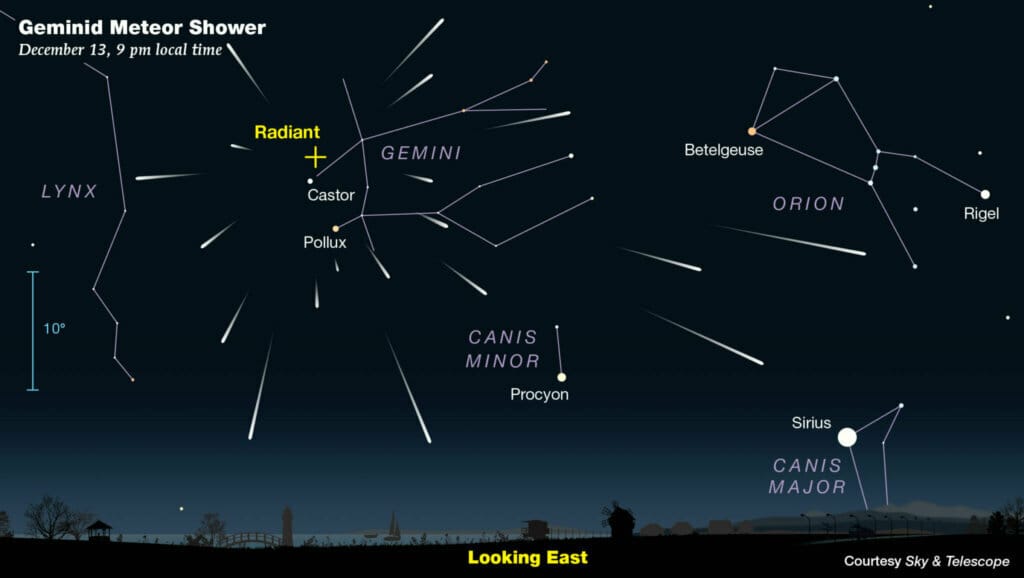This weekend, skywatchers around the globe will have the chance to witness Jupiter in a spectacle of celestial beauty as it reaches opposition. Opposition occurs when Earth is directly between the Sun and Jupiter, aligning the three celestial bodies in a straight line. This alignment results in Jupiter appearing at its closest to Earth, thus appearing larger and brighter than at any other time of the year.
**Understanding Opposition**
Opposition is an annual event for each planet in our solar system. For Jupiter, this event happens once every 13 months due to its orbital period. When a planet is in opposition, it rises in the east as the Sun sets in the west, making it visible all night. Here’s what happens:
– **Increased Brightness**: Because Jupiter is closer to Earth during opposition, it reflects more sunlight, making it appear significantly brighter.
– **Larger Apparent Size**: The planet’s closer proximity means it appears larger in our telescopes, offering detailed views of its cloud bands, Great Red Spot, and its four largest moons known as the Galilean moons: Io, Europa, Ganymide, and Callisto.
– **Visibility**: Jupiter will be visible all night, from dusk until dawn, providing ample opportunity for observation.
**Why This Opposition is Special**
Every opposition is unique due to Jupiter’s dynamic atmosphere and the ever-changing positions of its moons:
– **Great Red Spot**: This weekend, the Great Red Spot, a massive storm on Jupiter that’s been observed for over 300 years, might be visible. Its visibility depends on its rotation, which is about every six Earth days.
– **Moons’ Dance**: The positions of the Galilean moons will be particularly interesting. Observers might see transits, where moons pass in front of Jupiter, casting their shadows onto the planet, or occultations where Jupiter temporarily blocks a moon from view.
**Preparation for Observation**
To make the most of this viewing opportunity:
– **Telescope or Binoculars**: While Jupiter can be seen with the naked eye, using even a small telescope or good binoculars will significantly enhance what you can see. Look for the cloud bands and the moons.
– **Clear Night**: Choose a location away from city lights. Light pollution can greatly diminish the visibility of celestial bodies.
– **Weather Conditions**: Check the weather forecast. Clear skies are essential for optimal viewing.
– **Timing**: Jupiter will rise just after sunset. Observing when it’s high in the sky, around midnight, provides the best conditions due to less atmospheric distortion.
**Scientific Significance**
This opposition isn’t just a visual treat but also a scientific opportunity:
– **Data Collection**: Astronomers use these events to gather data on Jupiter’s atmosphere, its magnetic field, and the behavior of its moons.
– **Public Engagement**: Events like this increase public interest in astronomy, encouraging people to look up and learn more about our cosmic neighborhood.
– **Education**: Schools, planetariums, and astronomy clubs often host viewing parties, providing educational resources and telescopic views.
**Jupiter in History and Culture**
Jupiter has been a focal point of human observation for millennia:
– **Ancient Observations**: Known as the largest planet in our solar system, Jupiter was named after the king of the gods in Roman mythology, reflecting its majestic appearance in the night sky.
– **Cultural Impact**: It has influenced art, literature, and science, with names like “Jove” still used in literary works to refer to the planet or its god-like status.
– **Space Exploration**: Missions like NASA’s Juno probe continue to reveal the mysteries of Jupiter, providing data on its composition, magnetic field, and the potential for life in its moons, especially Europa.
**Future Oppositions**
While this weekend’s opposition is special, Jupiter will continue to offer viewing opportunities:
– **Annual Events**: Jupiter will return to opposition annually, but each event offers different viewing conditions due to Earth’s tilt, Jupiter’s axial tilt, and the changing positions of its moons.
– **Long-Term Study**: Regular observations over many oppositions contribute to our understanding of Jupiter’s long-term atmospheric and magnetic changes.
**Conclusion**
This weekend’s opposition of Jupiter is more than just an astronomical event; it’s a celebration of our ability to connect with the cosmos. Whether through a telescope, binoculars, or even just with the naked eye, this event provides a bridge between our world and the vast universe beyond. It’s a reminder of how small yet significant we are in the grand scheme of the cosmos, inviting all to look up and ponder the wonders of space.


